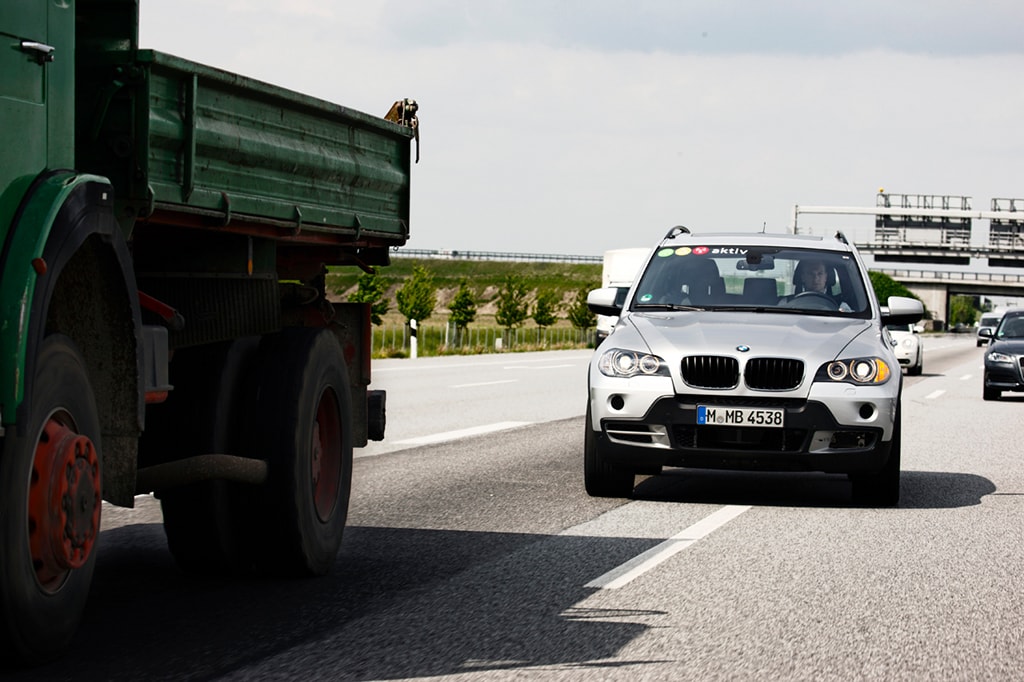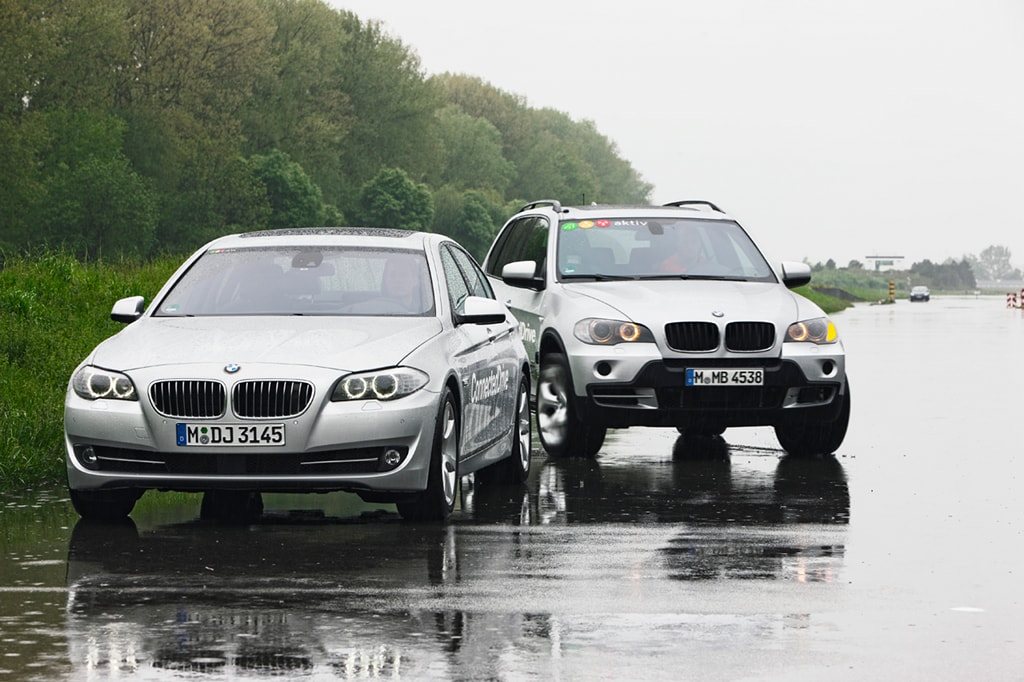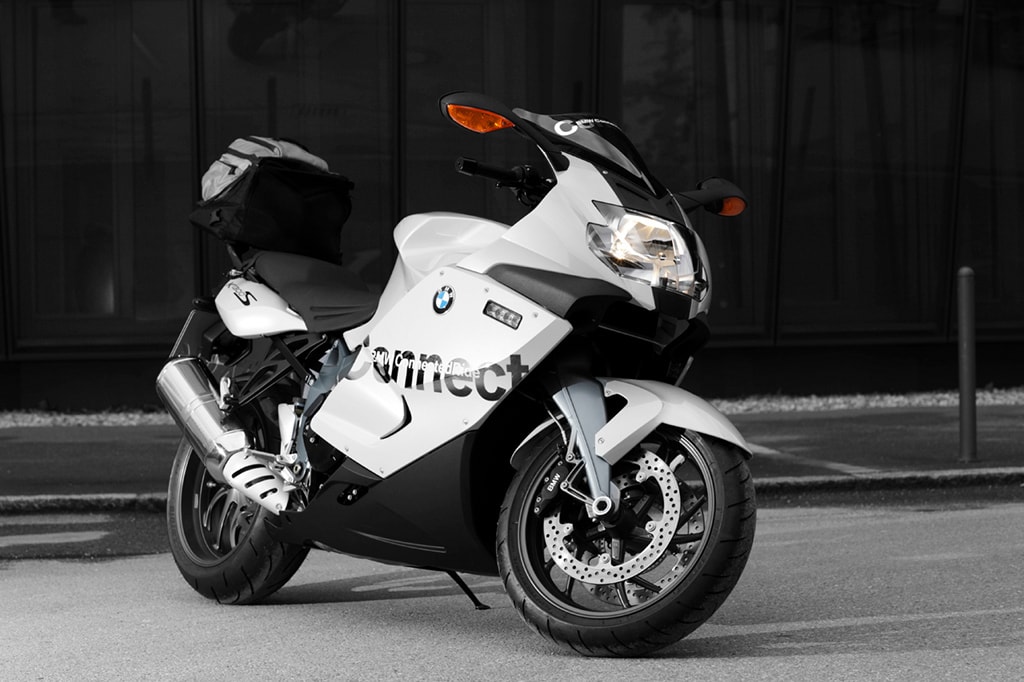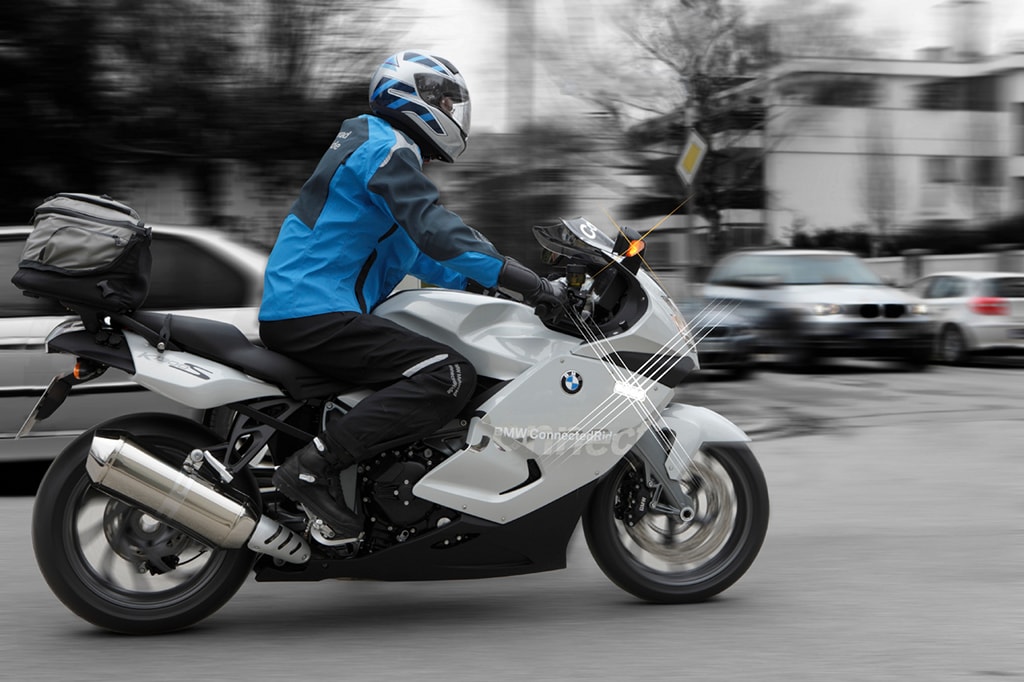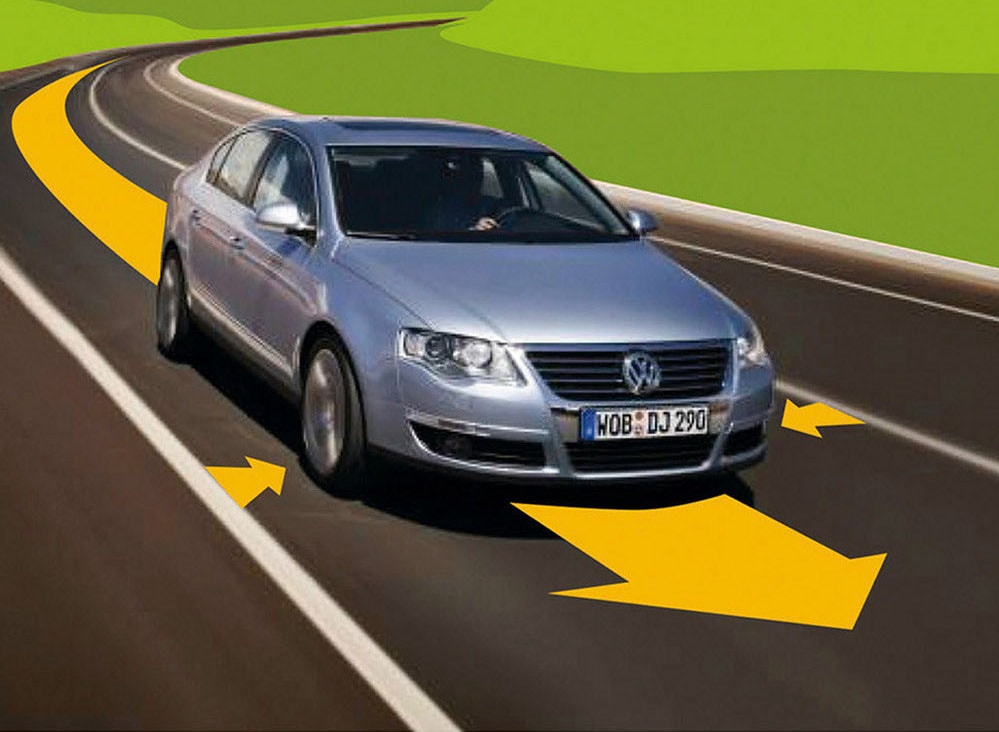As the world’s roads become ever more crowded, the need for traffic safety is constantly increasing. While the global automotive producers are making efforts to develop new systems that increase the level of active and passive safety for their cars, the world’s lawmakers are improving the traffic management systems to keep the roads as accident-free as possible. However, individual efforts can’t solve the problem, and a collective initiative that would connect the various aspects of everyday road travel is therefore needed. Such a project comes from Germany, where the authorities, carmakers, academic institutions, car industry suppliers and communication providers have joined forces to make driving a safer activity. The project was launched back in 2006, with the results of the research being released at the end of last month.
Dubbed AKTIV (adaptive and cooperative technologies for intelligent transport) the $76 million (EUR60) million initiative is divided into two main projects: Assistance systems/Active Safety (AS) and Traffic Management (VM). The project also includes the Cooperative Cars (CoCar) area. AS is the largest project in the research initiative, benefiting from a $47 million (EUR37 million) investment. The project follows a set of main topics: Integrated Lateral Assistance (IQF), Active Hazard Braking (AGB), Intersection Assistance (KAS), Pedestrian and Cyclist Safety (SFR) and Driver Awareness & Safety (FSA). The Traffic Management project has received a $23 million (EUR18 million) budget, with the research covering many topics, such as Situation-Responsive Driving (STAF).
Two of the companies that have developed a wide range of solutions for the AKTIV project are BMW and Volkswagen. We will preset you the traffic safety solutions proposed by the two German automakers.
BMW submitted solutions for both the Active Safety project and the Traffic Management initiative.
BMW Active Safety
BMW determined that many accidents take place due to the driver’s inadequate reactions, with the person behind the wheel taking action too late or not at all. BMW’s Forschung und Technik division decided to offer solutions that offer the driver more time to avoid an impact. The automaker has developed the Active Hazard Braking assistance system, which tried to eliminate nose-to-tail crashes. A set of laser scanners are installed on a vehicle to scan the road ahead and on the sides, with radar sensors covering the area behind the car. In addition to that, the driver’s behavior is constantly monitored. If the system detects that a collision is about to take place, it warns the driver and eventually fully applies the brakes to avoid the impact.
BMW Car2x communications
The BMW Group has created a system that exchanges data between the vehicle and the traffic infrastructure, with the project extending past the framework of BMW Motorrad’s Connected Ride strategy, which also brings bikers into the communications network. The data gathered from other road users through the Car2x communication system serves as a basis for the Intersection Assistance sub-project. If the system determines that the car which should give way is using a wrong approach, it warns the driver through visual and audible signals. During the response time, the system also applies a 30% braking force for one second. If the system is also installed on a motorcycle that approaches coming on the road with right of way, it will turn on the bike's headlights and even activate the horn, if the driver of the car doesn’t react.
Other BMW Active Safety sub-projects
Other sub-projects developed by BMW as part of the Active Safety project include Integrated Lateral Assistance, Pedestrian and Cyclist Safety and the crossover project Driver Awareness and Safety.
BMW in the Traffic Management area - Adaptive Navigation
The BMW Group has created the Adaptive Navigation system, which is aimed at combining information from multiple sources. The system combines data received from multiple providers of information sources, combining traffic data such as loop data, Floating Car Data, Extended Floating Car Data, mobile phone data and historic traffic load curves. The customers use these through routing, being presented with a journey map that shows the typical/worst/best conditions scenarios.
BMW in the Cooperative Cars project
This initiative has seen specialists investigate the extent to which mobile phone technologies such as UMTS can be used as real-time data change pathways to connect the traffic management and driver assistance systems. BMW has created a test vehicle to research the performance offered by this type of technologies, with one tested system being Intersection Assistance.
Volkswagen has installed a series of active protection systems that use cameras and radar sensors to continuously monitor the vehicle’s surroundings, focusing on detecting pedestrians and cyclists. The system detects the aforementioned categories several meters in front of the vehicle. If it determines that a critical situation might occur, the vehicle’s brakes are automatically activated. If the sensor detects that one of the front corners of the car is about to hit a pedestrian, the steering wheel will gently turn to avoid the impact. The systems allows the driver to override this function.
Integrated Lateral Assistance (AKTIV-IQF)
As part of the Lateral Assistance sub-project, Volkswagen Group Research has created an assistance system that continuously supports the driver in terms of longitudinal and lateral vehicle control, with the two features working together. This allows the the car’s speed to be adapted to the road’s path and driving situation. The system uses GPS tracking and digital map info to create a predictive vehicle speed strategy that also includes tight bends (that are beyond the surround sensor’s range) in its calculations. The system can also be used in congested city traffic or when driving through roadworks.
Driver Awareness and Safety (AKTIV-FSA)
This sub-project aims to provide an easy to use driver interface. Based on the aforementioned Integrated Lateral Assistance system, VW analyzed user-friendliness and controllability, as well as potential long-term changes in driver behavior. An empirical study on Adaptive Cruise Control (ACC) showed that the driver assistance system offers increased convenience and safety even after the driver has been using them for a long period of time.
Over 30% of traffic congestion on the German Autobahn is caused by roadworks. However, research studies have shown that driving behavior can heavily influence this. The road capacity could be increased by 3% if 10% of the drivers would use maneuvers that allow the traffic to flow. This would also allow for reductions in waiting time, fuel consumption and CO2 emissions.
VW’s Roadworks Pilot is a traffic assistance and information system that expands the ACC system currently available on cars to an additional function from the area of Traffic Management. The driver receives info about the roadworks ahead, with on-board system tracking the vehicle’s route to offer up-to-date information. This info is transmitted to roadside units (communications installations) via vehicle-to-infrastructure pathways. The roadside units collect data from passing vehicles, analyze it, and transmit it to the cars following as a local dynamic map. At the same time, the system offers driving recommendations for controlling distance and speed. The car can approach potential traffic congestion with caution, pass through a narrowed section at constant speed, maintaining the safe longitudinal and lateral distances in order to prevent a congestion wave from forming. Finally, the vehicle accelerates up to normal speed at the end of the roadworks section.
VW stresses the fact that driver assistance systems not only enhance safety and convenience, but also help prevent congestion and cut CO2 emissions.
We will end the article by mentioning that, in the end, the driver is the one who takes the decisions and therefore has the greatest influence on road safety. This means that the assistance systems should come to support an adequate driving style.
BMW determined that many accidents take place due to the driver’s inadequate reactions, with the person behind the wheel taking action too late or not at all. BMW’s Forschung und Technik division decided to offer solutions that offer the driver more time to avoid an impact. The automaker has developed the Active Hazard Braking assistance system, which tried to eliminate nose-to-tail crashes. A set of laser scanners are installed on a vehicle to scan the road ahead and on the sides, with radar sensors covering the area behind the car. In addition to that, the driver’s behavior is constantly monitored. If the system detects that a collision is about to take place, it warns the driver and eventually fully applies the brakes to avoid the impact.
BMW Car2x communications
The BMW Group has created a system that exchanges data between the vehicle and the traffic infrastructure, with the project extending past the framework of BMW Motorrad’s Connected Ride strategy, which also brings bikers into the communications network. The data gathered from other road users through the Car2x communication system serves as a basis for the Intersection Assistance sub-project. If the system determines that the car which should give way is using a wrong approach, it warns the driver through visual and audible signals. During the response time, the system also applies a 30% braking force for one second. If the system is also installed on a motorcycle that approaches coming on the road with right of way, it will turn on the bike's headlights and even activate the horn, if the driver of the car doesn’t react.
Other BMW Active Safety sub-projects
Other sub-projects developed by BMW as part of the Active Safety project include Integrated Lateral Assistance, Pedestrian and Cyclist Safety and the crossover project Driver Awareness and Safety.
BMW in the Traffic Management area - Adaptive Navigation
The BMW Group has created the Adaptive Navigation system, which is aimed at combining information from multiple sources. The system combines data received from multiple providers of information sources, combining traffic data such as loop data, Floating Car Data, Extended Floating Car Data, mobile phone data and historic traffic load curves. The customers use these through routing, being presented with a journey map that shows the typical/worst/best conditions scenarios.
BMW in the Cooperative Cars project
This initiative has seen specialists investigate the extent to which mobile phone technologies such as UMTS can be used as real-time data change pathways to connect the traffic management and driver assistance systems. BMW has created a test vehicle to research the performance offered by this type of technologies, with one tested system being Intersection Assistance.
Volkswagen in the AKTIV project
Pedestrian and Cyclist Safety (AKTIV-SFR)Volkswagen has installed a series of active protection systems that use cameras and radar sensors to continuously monitor the vehicle’s surroundings, focusing on detecting pedestrians and cyclists. The system detects the aforementioned categories several meters in front of the vehicle. If it determines that a critical situation might occur, the vehicle’s brakes are automatically activated. If the sensor detects that one of the front corners of the car is about to hit a pedestrian, the steering wheel will gently turn to avoid the impact. The systems allows the driver to override this function.
Integrated Lateral Assistance (AKTIV-IQF)
As part of the Lateral Assistance sub-project, Volkswagen Group Research has created an assistance system that continuously supports the driver in terms of longitudinal and lateral vehicle control, with the two features working together. This allows the the car’s speed to be adapted to the road’s path and driving situation. The system uses GPS tracking and digital map info to create a predictive vehicle speed strategy that also includes tight bends (that are beyond the surround sensor’s range) in its calculations. The system can also be used in congested city traffic or when driving through roadworks.
Driver Awareness and Safety (AKTIV-FSA)
This sub-project aims to provide an easy to use driver interface. Based on the aforementioned Integrated Lateral Assistance system, VW analyzed user-friendliness and controllability, as well as potential long-term changes in driver behavior. An empirical study on Adaptive Cruise Control (ACC) showed that the driver assistance system offers increased convenience and safety even after the driver has been using them for a long period of time.
Volkswagen in the Traffic Management project
Situation-Responsive Driving (AKTIV-STAF) - the VW Roadworks PilotOver 30% of traffic congestion on the German Autobahn is caused by roadworks. However, research studies have shown that driving behavior can heavily influence this. The road capacity could be increased by 3% if 10% of the drivers would use maneuvers that allow the traffic to flow. This would also allow for reductions in waiting time, fuel consumption and CO2 emissions.
VW’s Roadworks Pilot is a traffic assistance and information system that expands the ACC system currently available on cars to an additional function from the area of Traffic Management. The driver receives info about the roadworks ahead, with on-board system tracking the vehicle’s route to offer up-to-date information. This info is transmitted to roadside units (communications installations) via vehicle-to-infrastructure pathways. The roadside units collect data from passing vehicles, analyze it, and transmit it to the cars following as a local dynamic map. At the same time, the system offers driving recommendations for controlling distance and speed. The car can approach potential traffic congestion with caution, pass through a narrowed section at constant speed, maintaining the safe longitudinal and lateral distances in order to prevent a congestion wave from forming. Finally, the vehicle accelerates up to normal speed at the end of the roadworks section.
VW stresses the fact that driver assistance systems not only enhance safety and convenience, but also help prevent congestion and cut CO2 emissions.
We will end the article by mentioning that, in the end, the driver is the one who takes the decisions and therefore has the greatest influence on road safety. This means that the assistance systems should come to support an adequate driving style.
